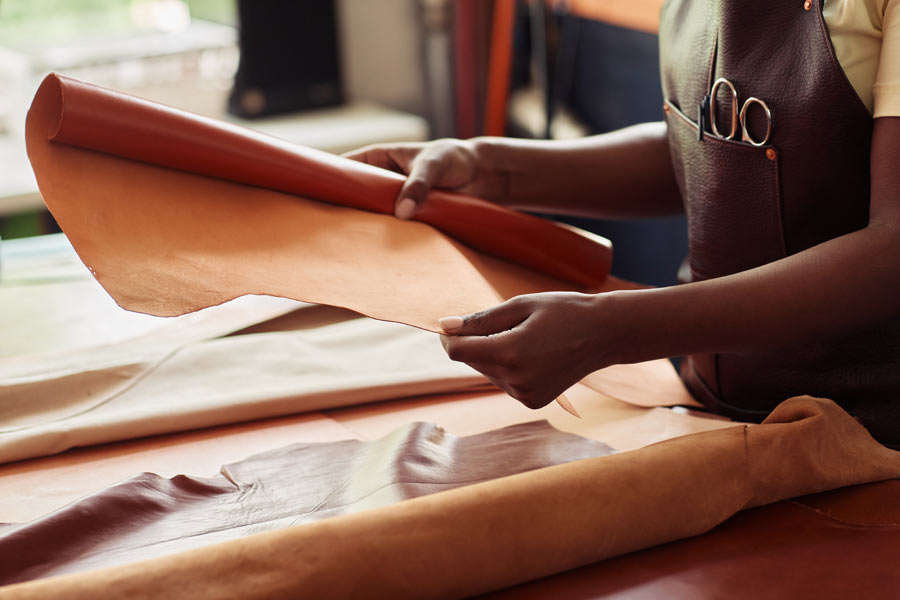
12 Jul How Can Sustainable Practices Enhance Leather Working? Eco-Friendly Techniques for Modern Artisans
Sustainability is no longer just a buzzword; it’s a way of life that’s increasingly infiltrating every industry, and leatherworking is no exception. As consumers become more eco-conscious, the demand for sustainably produced goods is on the rise. This shift challenges artisans to rethink their methods and adopt eco-friendly practices. By integrating sustainable techniques, leather workers can enhance their craft, reduce their environmental footprint, and appeal to a broader market. Let’s explore how sustainable practices can elevate the art of leatherworking.
1. Importance of Sustainable Leather Sourcing
The leather industry has long been scrutinized for its environmental impact. Traditional leather production involves processes that can be harmful to the environment, including deforestation, water pollution, and the use of toxic chemicals.
By sourcing leather from certified sustainable sources, artisans can significantly reduce these negative impacts. Sustainable leather comes from tanneries that follow strict environmental regulations and use eco-friendly processes. These sources often ensure that the hides are a byproduct of the meat industry, reducing waste. By choosing sustainably sourced leather, artisans can create high-quality products that are kinder to the planet.
2. Eco-Friendly Tanning Methods
Traditional tanning processes, especially chrome tanning, are notorious for their environmental toll. However, innovative tanning techniques are paving the way for a greener future in leatherworking.
Vegetable Tanning
Vegetable tanning uses natural tannins found in plants, such as oak or chestnut, to treat the leather. This method not only reduces the use of harmful chemicals but also produces leather that is biodegradable and ages beautifully over time.
Chrome-Free Tanning
Chrome-free tanning eliminates the use of chromium salts, which are harmful to both workers and the environment. This alternative produces durable and high-quality leather without the associated toxic waste.
Natural Dyeing Processes
Using natural dyes derived from plants, fruits, and even insects can replace synthetic dyes. Natural dyeing processes are less harmful to the environment and can produce a wide range of vibrant colors, adding a unique touch to leather products.
3. Use of Recycled and Upcycled Materials
Sustainability in leatherworking isn’t limited to sourcing and tanning; it extends to the creative use of materials. Recycled leather and upcycled materials are becoming popular choices among modern artisans.
Recycled Leather
Recycled leather is made from scraps and offcuts that are typically discarded during production. These remnants are reprocessed to create new, high-quality leather products, reducing waste and conserving resources.
Upcycling
Upcycling involves transforming old or discarded items into something new and valuable. Leather artisans can repurpose vintage leather goods, such as old jackets or bags, into fresh, unique pieces. This approach not only conserves materials but also adds a layer of history and character to the products.
4. Energy-Efficient Manufacturing Processes
The production process is another area where sustainability can be significantly improved. Energy-efficient practices help reduce the overall carbon footprint of leatherworking.
Solar-Powered Factories
Some leather manufacturers are now using solar power to run their factories. Solar energy is a clean and renewable resource that can greatly reduce reliance on fossil fuels and lower greenhouse gas emissions.
Energy-Efficient Machinery
Investing in energy-efficient machinery can also make a big difference. Modern machines are designed to consume less power while maintaining high productivity levels, ensuring that leather production is both efficient and eco-friendly.
Waste Heat Recovery
Waste heat recovery systems capture and reuse heat generated during the manufacturing process. This not only conserves energy but also reduces operating costs, making the production process more sustainable and economical.
5. Waste Reduction and Circular Economy Practices
Minimizing waste is crucial for sustainability. The leather industry is increasingly adopting circular economy principles to ensure that every piece of material is used effectively.
Recycling Scraps
Scraps and offcuts can be recycled and reprocessed into new leather products. By finding creative uses for these smaller pieces, artisans can minimize waste and create a diverse range of items, from accessories to home decor.
Repurposing Leather Remnants
Leather remnants can be repurposed into various products. For instance, smaller pieces can be used for patchwork designs, wallets, or jewelry. This not only reduces waste but also opens up new creative avenues for artisans.
6. Educating Consumers about Sustainable Choices
Consumer education plays a vital role in promoting sustainable leather products. By informing buyers about the benefits and importance of eco-friendly practices, artisans can drive demand for sustainable goods.
Transparency and Certification Labels
Transparency is key. Providing clear information about the sourcing, tanning, and manufacturing processes can build trust with consumers. Certification labels, such as those from the Leather Working Group (LWG), indicate that the products meet high environmental and ethical standards.
Importance of Consumer Awareness
Educating consumers about the environmental impact of their choices can encourage more sustainable purchasing decisions. Artisans can use their platforms to share stories about their sustainable practices, creating a deeper connection with their audience.
Conclusion
Integrating sustainable practices into leatherworking is not just an ethical choice; it’s a smart business move. By adopting eco-friendly techniques, artisans can enhance their craft, appeal to conscious consumers, and contribute to a greener future. Sustainable leatherworking practices, from sourcing to production and consumer education, offer a pathway to a more responsible and innovative industry. It’s time for artisans and consumers alike to embrace these practices and work towards a sustainable future, one beautiful leather piece at a time.


